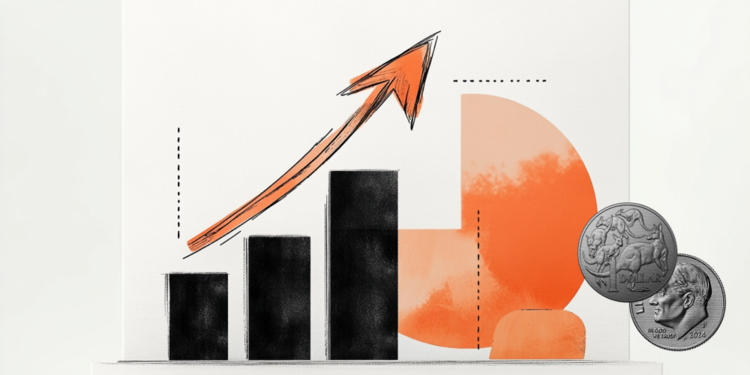- The US Producer Price Index for April shows a monthly reading higher than expected.
- Fed Chair Jerome Powell points to a strong US economic outlook, which could delay interest rate cuts.
- Markets await Wednesday's CPI data to continue betting on the Fed's easing cycle.
The US Dollar Index (DXY) is currently trading around 105.35, with minimal losses. The US Producer Price Index (PPI) showed no surprises in the annual print, but monthly prices rose more than expected. Jerome Powell stuck to the script given in the Federal Reserve's (Fed) latest decision that interest rates may have to stay higher for longer, but that cuts will eventually come and inflation will return to target.
The US economy is showing robust growth and persistent inflation, making the Fed cautious about cutting rates. On Wednesday, Consumer Price Index (CPI) data for April will likely influence expectations for the easing cycle, which is expected to begin in September.
Daily Market Moves Summary: DXY dips slightly as markets digest PPI data ahead of CPI
- The US Bureau of Labor Statistics revealed that the Producer Price Index (PPI) increased 2.2% annually in April. The annual core PPI and the monthly core PPI registered an increase of 2.4% and 0.5%, respectively, in line with March figures.
- Both the PPI and the core PPI registered an increase of 0.5% monthly in April.
- The odds of a cut in June and July remain low, as the best-case scenario for markets right now is for the Fed to start cutting in September. A cut in November is totally discounted.
Technical analysis of the DXY: The DXY registers corrections but maintains the bullish bias
On the daily chart, the RSI is sloping downward into negative territory, indicating that the selling momentum is still present. Furthermore, the Moving Average Convergence Divergence (MACD) shows ascending red bars, demonstrating growing bearish momentum in the short term.
That said, the DXY's position relative to its simple moving averages (SMA) paints a different picture. Currently, the index is below the 20-day SMA, highlighting the recent bearish control, but the fact that it is above the 100-day and 200-day SMA indicates that bull support is not in place. all lost.
Frequently asked questions about the Fed
The Federal Reserve (Fed) determines US monetary policy. The Fed has two mandates: achieving price stability and promoting full employment. Your main tool to achieve these objectives is to adjust interest rates. When prices rise too quickly and inflation exceeds the Fed's 2% target, the Fed raises interest rates, raising borrowing costs throughout the economy. The result is a stronger US Dollar (USD), as it makes the United States a more attractive place for international investors to put their money. When inflation falls below 2% or the unemployment rate is too high, the Fed can lower interest rates to encourage borrowing, which weighs on the dollar.
The Federal Reserve (Fed) holds eight monetary policy meetings a year, at which the Federal Open Market Committee (FOMC) assesses economic conditions and makes monetary policy decisions. The FOMC is attended by twelve Fed officials: the seven members of the Board of Governors, the president of the Federal Reserve Bank of New York, and four of the eleven presidents of the remaining regional Reserve banks, who serve for a period of time. year on a rotating basis.
In extreme situations, the Federal Reserve can resort to a policy called Quantitative Easing (QE). QE is the process by which the Fed substantially increases the flow of credit into a clogged financial system. This is a non-standard policy measure used during crises or when inflation is extremely low. It was the Fed's weapon of choice during the Great Financial Crisis of 2008. It involves the Fed printing more Dollars and using them to buy high-quality bonds from financial institutions. QE usually weakens the US Dollar.
Quantitative tightening (QT) is the reverse process of QE, whereby the Federal Reserve stops buying bonds from financial institutions and does not reinvest the principal of the bonds it owns that are maturing, to buy new bonds. It is usually positive for the value of the US Dollar.
Source: Fx Street
I am Joshua Winder, a senior-level journalist and editor at World Stock Market. I specialize in covering news related to the stock market and economic trends. With more than 8 years of experience in this field, I have become an expert in financial reporting.







